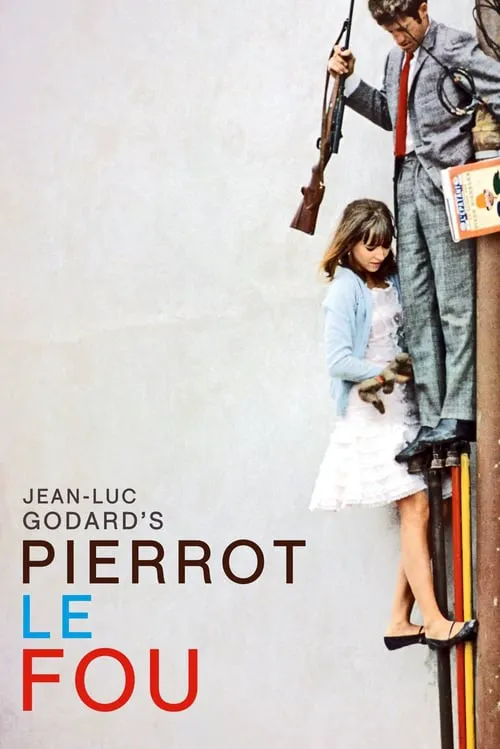Pierrot le Fou

Plot
Pierrot Le Fou, directed by Jean-Luc Godard in 1965, is a French New Wave film that defies conventional storytelling norms. The movie is an adaptation of a novel by Liliane Lefebvre by the same title, but Godard's interpretation diverges significantly from the original work. On the surface, the narrative appears to be a loose, improvisational tale of a disillusioned man's journey to escape the monotony of his life. However, this film is more than just a surface-level narrative; it's a thought-provoking exploration of existentialism, freedom, and the human condition. The story centers on Pierrot, played by Jean-Paul Belmondo, a charismatic protagonist who abandons his mundane life in Paris. Initially, he's a married man, but he finds his life too suffocating, and he's eager to break free from societal expectations. His wife, Marianne, portrayed by Anna Karina, becomes aware of his intentions to leave her and the couple's daughter. However, Marianne has her own set of problems; she's being pursued by hitmen from Algeria due to her connections with a group of radical Algerian rebels. When Pierrot decides to take Marianne with him, their journey begins, as they make their way to the Mediterranean Sea. Throughout their travels, which take them through picturesque landscapes and bustling cities, the couple forms an unorthodox bond. As they evade the hitmen and avoid getting caught in their pursuit of a "free" life, they find themselves entangled in the turmoil of the world around them. Marianne becomes a source of inspiration for Pierrot; she represents the carefree life he's always yearned for. Together, they take risks, challenge societal norms, and immerse themselves in the raw experience of the world. They engage in reckless behavior, such as getting involved in a violent confrontation with a group of thugs in the countryside. The scenes featuring the couple's escapades showcase Godard's innovative approach to storytelling, as the narrative meanders through a series of fragmented and non-linear sequences, mirroring the fluidity of life itself. One of the standout aspects of Pierrot Le Fou is its poetic use of language and visuals. Godard's script incorporates witty dialogues, philosophical musings, and abstract monologues that underscore the protagonists' inner turmoil and existential musings. The cinematography, crafted by Raoul Coutard, captures the vivid colors and sweeping landscapes of post-war France, injecting the film with a sense of spontaneity and fluidity. As the narrative unfolds, it's difficult to discern what's real and what's imagined. Characters frequently address the audience directly, breaking the fourth wall and further blurring the lines between reality and fiction. The use of multiple narrative threads and non-linear storytelling adds to the film's complexity, making it challenging to pinpoint exactly what Godard is trying to convey. Through this unconventional narrative structure, Pierrot Le Fou poses fundamental questions about the nature of freedom, identity, and the societal norms that govern human behavior. It's a thought-provoking film that challenges viewers to question the very fabric of reality and their place within it. In Pierrot Le Fou, we see a couple who abandon the constraints of modern society to live authentically and experience life on their own terms. Their journey, fraught with danger and uncertainty, serves as a metaphor for the existential quest of modern humanity. As they evade their pursuers, they confront the fragility of human life and the futility of societal expectations. Their relationship serves as a reflection of the human desire for connection and freedom. Ultimately, Pierrot Le Fou presents a bleak yet captivating vision of the world. It's a film that challenges viewers to engage with the complexities and contradictions of human existence. By eschewing traditional narrative structures and embracing experimentation, Godard has crafted a cinematic experience that remains as enigmatic and mesmerizing as it was upon its initial release.
Reviews
Recommendations




